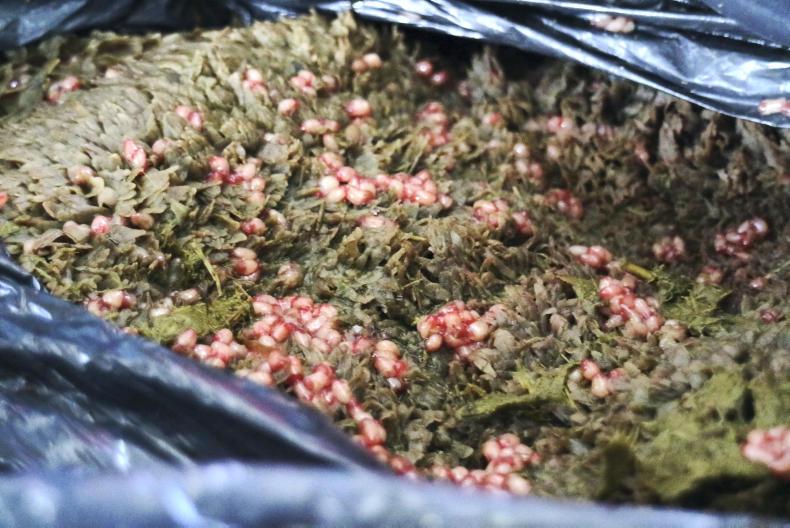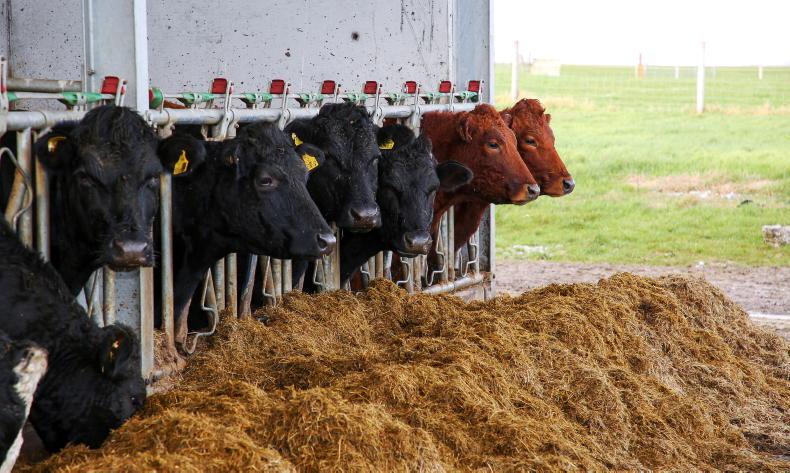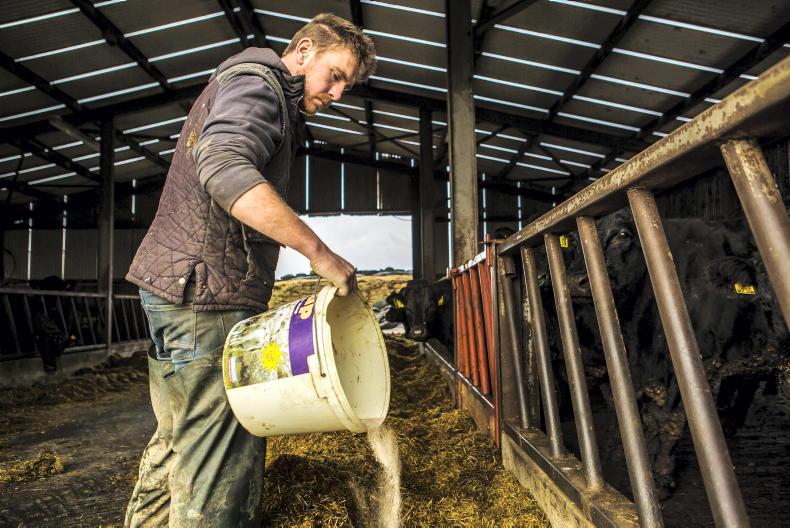 Farmers on wet ground or in certain areas of the country, where rainfall in recent years has led to an extension of snail habitats, are generally accustomed to dealing with fluke. However, as a relatively unpredictable disease, more and more farmers are reporting incidents of liver or rumen fluke on farms not previously affected. It is worth reviewing briefly the signs and the control of these diseases to avoid unexpected losses.
Farmers on wet ground or in certain areas of the country, where rainfall in recent years has led to an extension of snail habitats, are generally accustomed to dealing with fluke. However, as a relatively unpredictable disease, more and more farmers are reporting incidents of liver or rumen fluke on farms not previously affected. It is worth reviewing briefly the signs and the control of these diseases to avoid unexpected losses.
Liver fluke
Classically, liver fluke struck (usually sheep) from August onwards as “acute fluke disease”. This condition is characterised by weakness, anaemia and sudden death, either directly from fluke or from secondary clostridial disease (principally Black Disease).
As the year progresses, this evolves to subacute fluke disease, where losses are less severe but signs of anaemia and weakness can still lead to mortality. This condition can arise in either sheep or cattle. After Christmas, chronic disease classically arises. It is more common in cattle and is characterised by ill-thrift, anaemia and oedema (bottle jaw – where dropsy fluid accumulates under the jaw). Over weeks, these animals can ultimately die if not treated.
Rumen fluke
The typical clinical signs of rumen fluke are very mild or even subclinical. Certain exceptions exist – for example, where the disease affects young growing stock where signs can involve sudden onset of diarrhoea, anaemia and indeed mortality over a short period. Disease is usually mild in older stock, involing ill-thrift, diarrhoea and poor production and can be exacerbated where nutrition is suboptimal.
It is important to emphasise, however, that, unlike liver fluke, many cases of rumen fluke infestation occur in the absence of clinical signs which do not merit treatment.
Control of fluke involves a three-step programme as follows:
Seasonal appropriate treatment.Regularly screen animals for infestation.Snail habitat management.Seasonal appropriate treatment
Migration of liver fluke in the animal typically occurs through the months of August to October. From the end of November onwards, most fluke are adult or late immature. However, if initial infestation occurs in late October, adult fluke will not be present until late January.
It is important to realise that this seasonality is only a rough guide as many animals will contain adults and immatures at the same time in different seasons.
Numerous medications are available for treating liver fluke alone, or as combined flukicides and wormers. Always check whether the products you intend using are active against immature fluke or adults only as this determines whether they will be effective at removing all fluke at the time of treatment.
Triclabendazole-containing products should theoretically be the best products to cater for fluke control, as they are effective against early immature liver fluke. However, anecdotal reports (especially in sheep) suggest that resistance has developed to these flukicides, possibly because the active ingredient has been contained in market-leading products for many years. The development of resistance to these products underlines the benefit of rotating flukicides at each treatment or at least on an annual basis on a farm between drug classes, eg moving from nitroxynil to rafoxanide to closantel and back to triclabendzole.
As oxyclozanide-containing products are the only medicines effective (though not licensed) against rumen fluke, it is advisable to use them judiciously in order to avoid resistance developing.
A rough guide is given in Table 1 below of some useful times to consider liver flukicide treatment. It must be remembered that combination fluke and worm products must be used judiciously or, in many circumstances, the flukicide or wormer component will be given at an inappropriate time.
Rumen fluke treatment
Medication for rumen fluke should only be administered on farms with a recent or recurrent seasonal history of clinical disease. There are no licensed products for rumen fluke. However, oxyclozanide has been shown to be effective. In most cases, a single treatment is sufficient. However, in cases of heavy infestation, two treatments spaced three days apart may give better control of immatures and adult rumen fluke.
One older study found that a single treatment is suspected to be approximately 80% effective. A repeat treatment may be necessary approximately three months later if clinical signs and laboratory findings suggest treatment is required. Beef animals may receive Zanil, Chanil or other oxyclozanide-containing products (Levafas C/Diamond or Pharmazan). Late spring/pre-turnout treatment is aimed at removing remaining fluke that have over-wintered as adults within the animal and, as a result, stopping pasture contamination with fluke eggs contained in faeces.
It is incumbent on every farmer to draw up a herd health plan in conjunction with their veterinary practitioner each year in order to avoid losses. While some generalisations can be made, the most successful health plans are farm-specific, taking into account local risk profiles, climate and farm history. Knowledge Transfer herd health plans are ideally suited to achieve this goal.
Regularly screen animals
for infestation
Examination of faeces for the presence of liver fluke eggs still remains the most popular method of diagnosing liver fluke infestations. However, this technique is labour-intensive and may result in missed diagnosis because of low egg output in infested animals or lack of egg output during acute and subacute disease prior to adults reaching the bile duct to complete the life cycle.
Additionally, liver flukes are generally not evenly dispersed within a herd; a small percentage of animals in a herd will carry the greatest fluke loads and therefore shed the most fluke eggs. It has been found that fluke-infected cattle shed relatively few eggs; therefore, a minimum of 10 samples should be examined before any diagnosis of fluke infection or lack of infection is made on any cattle herd.
However, the best diagnostic tool would simply be to examine the livers of your cull animals while they are being slaughtered. Unlike traditional fluke egg counts, the ELISA test, which can be carried out on blood samples or bulk milk samples, can detect early fluke infection and is more reliable (though not 100% either).
Regarding rumen fluke, adults can readily be visualised in the slaughter plant once the rumen is opened. Arrangements should be made through your veterinary practitioner to examine the livers/rumens at the time of slaughter. Some abattoirs provide feedback as part of a formal surveillance system, which is really useful.
The presence of rumen fluke eggs in faeces, accompanied by clinical signs, is enough to warrant treatment; though not where eggs are detected without signs. Unfortunately, no blood test exists for rumen fluke.
Snail habitat management
Drainage of areas prone to flooding or severe poaching provides the best long-term control. It is highly advised to fence off fluke habitats, particularly ditches, ponds, rushes and areas that are wet or muddy and slightly acidic – hotspots for snails carrying the disease. An excellent environment for the snail is established where frequently used animal trails cross drainage ditches or lead to watering ponds.
If animals are removed from the pasture and the crossings are not used, grass and weed growth will soon cover the open muddy areas, thus destroying the environment that snails prefer. Providing an alternative source of water (mains supply) is well worth considering.
Mud snails rarely inhabit pastures free of open mud areas. As a short-term control option, select drier paddocks for autumn grazing. If swampy areas are drained or converted into deeper, quickly moving water, snails and associated fluke risk will be greatly reduced. It is often very difficult and expensive to do this but it may be practicable to fence off areas which are known to harbour snails.
If wet pastures are grazed continuously, young weanling calves and lambs should not be grazed together with adults. Tree planting in wet areas could also be considered, as the fluke snail doesn’t live in areas which have a dense cover of vegetation. Chemicals available for control of snails are very long-lasting and can kill other forms of life, including fish. Their use cannot be recommended.

Read more
Focus on winter indoor management
 Farmers on wet ground or in certain areas of the country, where rainfall in recent years has led to an extension of snail habitats, are generally accustomed to dealing with fluke. However, as a relatively unpredictable disease, more and more farmers are reporting incidents of liver or rumen fluke on farms not previously affected. It is worth reviewing briefly the signs and the control of these diseases to avoid unexpected losses.
Farmers on wet ground or in certain areas of the country, where rainfall in recent years has led to an extension of snail habitats, are generally accustomed to dealing with fluke. However, as a relatively unpredictable disease, more and more farmers are reporting incidents of liver or rumen fluke on farms not previously affected. It is worth reviewing briefly the signs and the control of these diseases to avoid unexpected losses.
Liver fluke
Classically, liver fluke struck (usually sheep) from August onwards as “acute fluke disease”. This condition is characterised by weakness, anaemia and sudden death, either directly from fluke or from secondary clostridial disease (principally Black Disease).
As the year progresses, this evolves to subacute fluke disease, where losses are less severe but signs of anaemia and weakness can still lead to mortality. This condition can arise in either sheep or cattle. After Christmas, chronic disease classically arises. It is more common in cattle and is characterised by ill-thrift, anaemia and oedema (bottle jaw – where dropsy fluid accumulates under the jaw). Over weeks, these animals can ultimately die if not treated.
Rumen fluke
The typical clinical signs of rumen fluke are very mild or even subclinical. Certain exceptions exist – for example, where the disease affects young growing stock where signs can involve sudden onset of diarrhoea, anaemia and indeed mortality over a short period. Disease is usually mild in older stock, involing ill-thrift, diarrhoea and poor production and can be exacerbated where nutrition is suboptimal.
It is important to emphasise, however, that, unlike liver fluke, many cases of rumen fluke infestation occur in the absence of clinical signs which do not merit treatment.
Control of fluke involves a three-step programme as follows:
Seasonal appropriate treatment.Regularly screen animals for infestation.Snail habitat management.Seasonal appropriate treatment
Migration of liver fluke in the animal typically occurs through the months of August to October. From the end of November onwards, most fluke are adult or late immature. However, if initial infestation occurs in late October, adult fluke will not be present until late January.
It is important to realise that this seasonality is only a rough guide as many animals will contain adults and immatures at the same time in different seasons.
Numerous medications are available for treating liver fluke alone, or as combined flukicides and wormers. Always check whether the products you intend using are active against immature fluke or adults only as this determines whether they will be effective at removing all fluke at the time of treatment.
Triclabendazole-containing products should theoretically be the best products to cater for fluke control, as they are effective against early immature liver fluke. However, anecdotal reports (especially in sheep) suggest that resistance has developed to these flukicides, possibly because the active ingredient has been contained in market-leading products for many years. The development of resistance to these products underlines the benefit of rotating flukicides at each treatment or at least on an annual basis on a farm between drug classes, eg moving from nitroxynil to rafoxanide to closantel and back to triclabendzole.
As oxyclozanide-containing products are the only medicines effective (though not licensed) against rumen fluke, it is advisable to use them judiciously in order to avoid resistance developing.
A rough guide is given in Table 1 below of some useful times to consider liver flukicide treatment. It must be remembered that combination fluke and worm products must be used judiciously or, in many circumstances, the flukicide or wormer component will be given at an inappropriate time.
Rumen fluke treatment
Medication for rumen fluke should only be administered on farms with a recent or recurrent seasonal history of clinical disease. There are no licensed products for rumen fluke. However, oxyclozanide has been shown to be effective. In most cases, a single treatment is sufficient. However, in cases of heavy infestation, two treatments spaced three days apart may give better control of immatures and adult rumen fluke.
One older study found that a single treatment is suspected to be approximately 80% effective. A repeat treatment may be necessary approximately three months later if clinical signs and laboratory findings suggest treatment is required. Beef animals may receive Zanil, Chanil or other oxyclozanide-containing products (Levafas C/Diamond or Pharmazan). Late spring/pre-turnout treatment is aimed at removing remaining fluke that have over-wintered as adults within the animal and, as a result, stopping pasture contamination with fluke eggs contained in faeces.
It is incumbent on every farmer to draw up a herd health plan in conjunction with their veterinary practitioner each year in order to avoid losses. While some generalisations can be made, the most successful health plans are farm-specific, taking into account local risk profiles, climate and farm history. Knowledge Transfer herd health plans are ideally suited to achieve this goal.
Regularly screen animals
for infestation
Examination of faeces for the presence of liver fluke eggs still remains the most popular method of diagnosing liver fluke infestations. However, this technique is labour-intensive and may result in missed diagnosis because of low egg output in infested animals or lack of egg output during acute and subacute disease prior to adults reaching the bile duct to complete the life cycle.
Additionally, liver flukes are generally not evenly dispersed within a herd; a small percentage of animals in a herd will carry the greatest fluke loads and therefore shed the most fluke eggs. It has been found that fluke-infected cattle shed relatively few eggs; therefore, a minimum of 10 samples should be examined before any diagnosis of fluke infection or lack of infection is made on any cattle herd.
However, the best diagnostic tool would simply be to examine the livers of your cull animals while they are being slaughtered. Unlike traditional fluke egg counts, the ELISA test, which can be carried out on blood samples or bulk milk samples, can detect early fluke infection and is more reliable (though not 100% either).
Regarding rumen fluke, adults can readily be visualised in the slaughter plant once the rumen is opened. Arrangements should be made through your veterinary practitioner to examine the livers/rumens at the time of slaughter. Some abattoirs provide feedback as part of a formal surveillance system, which is really useful.
The presence of rumen fluke eggs in faeces, accompanied by clinical signs, is enough to warrant treatment; though not where eggs are detected without signs. Unfortunately, no blood test exists for rumen fluke.
Snail habitat management
Drainage of areas prone to flooding or severe poaching provides the best long-term control. It is highly advised to fence off fluke habitats, particularly ditches, ponds, rushes and areas that are wet or muddy and slightly acidic – hotspots for snails carrying the disease. An excellent environment for the snail is established where frequently used animal trails cross drainage ditches or lead to watering ponds.
If animals are removed from the pasture and the crossings are not used, grass and weed growth will soon cover the open muddy areas, thus destroying the environment that snails prefer. Providing an alternative source of water (mains supply) is well worth considering.
Mud snails rarely inhabit pastures free of open mud areas. As a short-term control option, select drier paddocks for autumn grazing. If swampy areas are drained or converted into deeper, quickly moving water, snails and associated fluke risk will be greatly reduced. It is often very difficult and expensive to do this but it may be practicable to fence off areas which are known to harbour snails.
If wet pastures are grazed continuously, young weanling calves and lambs should not be grazed together with adults. Tree planting in wet areas could also be considered, as the fluke snail doesn’t live in areas which have a dense cover of vegetation. Chemicals available for control of snails are very long-lasting and can kill other forms of life, including fish. Their use cannot be recommended.

Read more
Focus on winter indoor management
 Farmers on wet ground or in certain areas of the country, where rainfall in recent years has led to an extension of snail habitats, are generally accustomed to dealing with fluke. However, as a relatively unpredictable disease, more and more farmers are reporting incidents of liver or rumen fluke on farms not previously affected. It is worth reviewing briefly the signs and the control of these diseases to avoid unexpected losses.
Farmers on wet ground or in certain areas of the country, where rainfall in recent years has led to an extension of snail habitats, are generally accustomed to dealing with fluke. However, as a relatively unpredictable disease, more and more farmers are reporting incidents of liver or rumen fluke on farms not previously affected. It is worth reviewing briefly the signs and the control of these diseases to avoid unexpected losses.











SHARING OPTIONS